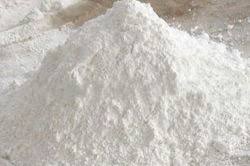For a long time, lime was used to keep the CO2 level in cold stores under control. Lime has now been replaced almost completely by CO2 adsorbers that work with activated carbon. However, a few still believe that lime is ‘better’ or cheaper. Let’s take a look at this.
As an example we take a grower with 6 cold stores, each with 120 tons of pears. The respiratory rate of pears under stable conditions is about 1.5 ml CO2/(kg * h)-1. CO2 binding by slaked lime proceeds according to the following reaction:
Ca(OH)2 + CO2 —> CaCO3 + H2O + heat
Ca(OH)2 binds with a molar ratio of 1 : 1 the CO2 produced by the fruits. The average respiration rate of pears, in contrast to apples, increases slowly during the storage season. If we calculate with the normal respiration value over the season, about 2 kg of lime per ton per month would be needed. However, this calculation assumes that the lime is 100% available and used, and does not take into account higher respiration values at the beginning and end of the season. We therefore assume 3 kg per metric ton per month. Each year, this grower needs no less than 15 tons of slaked lime (based on an average storage life of 7 months). The payback period of a CO2 adsorber would then be approximately 5 years. However, a few caveats should be noted:
- A CO2 adsorber does not last 5 years, but much longer, usually about 15 years.
- Lime often has to be replaced during storage, which means that the gas conditioning in cold stores has to be interrupted, because the door has to be opened for this. This is not only unfavorable for the fruit quality, but also labour-intensive. These costs are not included. A small fruit grower can still do this by him- or herselve, but due to the progressive increase in scale, this is virtually no longer possible, and this would require staff.
- Where there is lime, there is no fruit. Lime takes up valuable space.
- The lime is never used efficiently because it is stuck on a pallet. In practice, more lime will be needed than expected. The use of fans and lime chambers helps, but also makes adsorbing in this way more expensive.
- The CO2 level in the cold store cannot be set. In general, growers avoid CO2 values that are too low, because results in less green pears. In short, the tendency is to avoid internal browning and cavity formation, but still keep CO2 as high as possible: 0.5-0.7%
- The lime must be supplied, and it must remain somewhere after use. These costs are not included. Used lime cannot simply be scattered in the orchard, as it can alter soil life by changing the pH (and is not allowed in many countries).

The conclusion is that the payback time of an adsorber is shorter, and that lime is less profitable. For this reason (in the Netherlands) adsorbing with lime is almost no longer used.